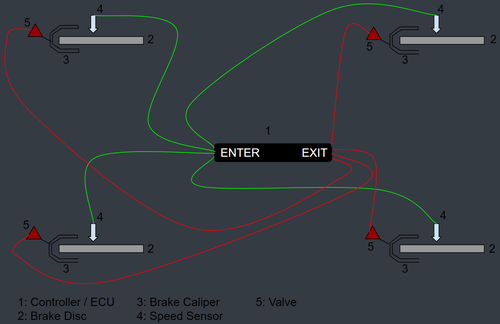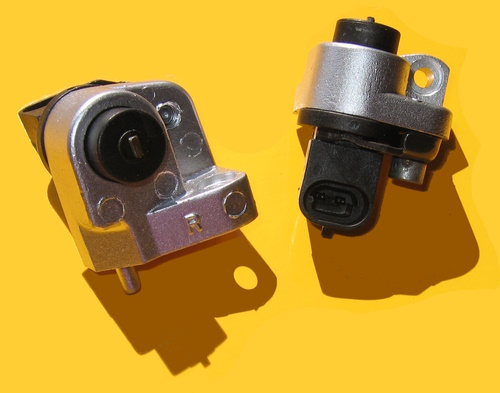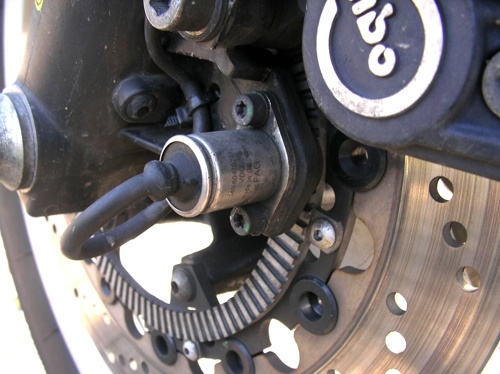How ABS can Save Your Life
ABS is present in almost every street-legal car out on the road. However, did you know it probably saved your life at least once? Let’s get into it.
ABS, or Anti-lock Braking System, is a system present in almost every car nowadays. It’s a system that really increases safety, and has undergone through a lot of changes.
A brief history of the ABS
ABS was first invented around 1920 and used in some planes, but it wasn’t until 1928 when Karl Wässel when it received its recognition. Even though it was patented, nor Karl Wässel or Robert Bosch 8 years later could create a working version. While ABS was becoming more and more popular in planes, it still wasn’t present in road vehicles. All the ABS systems weren’t fully electronic, they used mechanical principles to function.
Proffesional drivers (and some normal drivers) used a technique to prevent this wheel lock, called threshold braking, which consisted in manually pressing the brake pedal just enough for the wheels to not lock, and preventing a loss of traction.
In 1960, the first fully-electronic ABS was created, and was first used in a plane. However, ABS as we know it wasn’t created until 1971, when Mario Palazzetti working at Fiat Automobiles S.p.A developed the ABS as we know it.
What it does
ABS is an electronic system which prevents locking the wheels, which would result in a loss of traction and a possible accident. When the brake pedal is pressed at it’s maximum capacity, the brakes press so hard on the brake discs that they lock the wheel completely. This complete blockage makes the car slide. This is specially dangerous because steering is useless while wheels are locked.
To prevent this situation, ABS electronically controls the braking force applied, by measuring time and revolutions of the wheels.
How it works
An essential part which every modern car has is the ECU (Electronic Control Unit) or controller. The ECU is in charge of constantly monitoring each wheel’s speed. When a wheel rotates at a lower speed than it should compared with the car’s velocity, the ECU instantly detects the wheel is skidding, and releases the braking force just enough for the wheel to not skid.
ECU systems need to do this operation very fast, to prevent any unwanted movement on the car or a loss of control. Some ECUs can even manage to complete this task up to 15 times per second.
Drivers can detect if ABS kicked in because of some slight pulsations on the brake pedal, which are caused by the controller quickly opening and releasing the valves.

Components
Speed sensors:
These measure the wheel’s speed using the Hall effect sensor. The information picked up by the sensors are sent to the controller.
Valves:
Regulates the pressure on the brakes. Can be in 3 different states:
- Open. Pressure applied on the pedal directly affects the brake.
- Closed. Pressure applied on the pedal doesn’t affect the brake if it’s pushed harder.
- Releasing. The valve releases some pressure from the brake pad onto the brake disc.
Pump:
The pump restores the brake pressure after it was released by the valve.
Controller:
The controller receives information sent from the speed sensors. It is responsible for opening and closing the corresponding valve of any wheel in the case it skids.
Types of ABS
1. One-channel, one-sensor
Found in: Pickup trucks and SUVs
Functioning: 1 control valve to control two wheels + 1 sensor
2. Two-channel, four-sensor
Found in: Passenger cars from the 80’s to mid 90’s
Functioning: 1 control valve + 4 sensors
3. Three-channel, three-sensor
Found in: Pickup trucks
Functioning: 3 valves + 3 sensors (two for the front wheels and one for the back ones)
4. Three-channel, four-sensor
Found in: Old vehicles
Functioning: 3 valves (2 for the front wheels and one for the back ones) + 4 sensors
5. Four-channel, four-sensor
Found in: Modern cars
Functioning: 4 valves + 4 sensors


